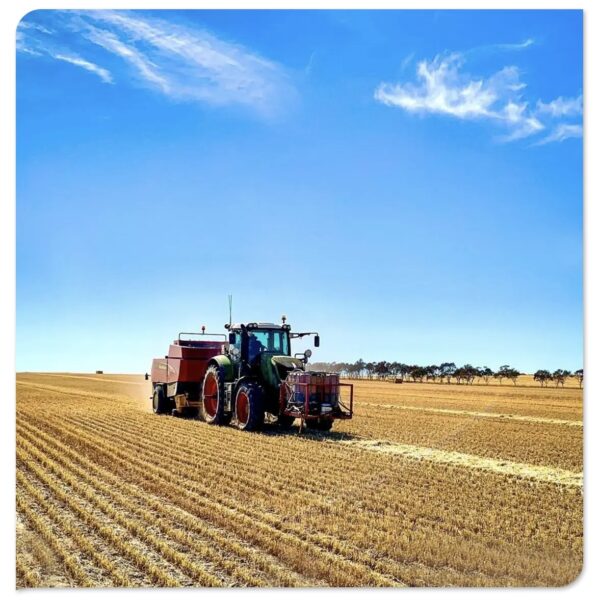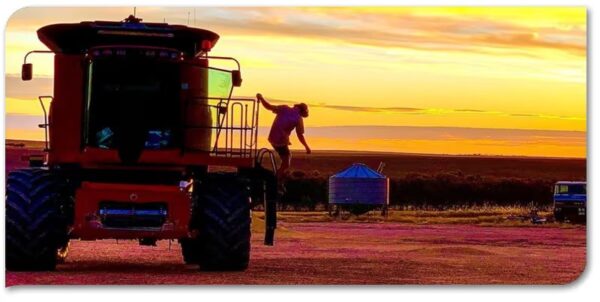
Key messages
• Financial and climate risks minimised with low input farming system
• Synthetic N inputs down to 20% of district average
• Carbon footprint an increasingly important consideration
• Critical need for a WA-relevant carbon emissions calculator
• Soil carbon benchmarking needed across wheatbelt to identify most sustainable farming systems
Tolga Farm details
Owners: Brendon and Gab Savage
Location: Kulin, WA (30km south)
Area: 5200 hectares arable
Soils: Light to medium, running to gravel ridges
Average rainfall: 350mm
Enterprises: 50% sheep (60% maternal composite ewes and 40% Merino) – flocks are high fertility (triplets/twins).
50% crop (1500ha barley, 1000ha oats and 120ha grazing Illabo wheat).
Building climate resilience wasn’t the primary reason Kulin farmer Brendon Savage embarked on a new farming system 17 years ago — what he mostly wanted was to lower his input costs, reduce his business risk and improve the nutritional status of his soil, crops and livestock.
But along with input costs, the new approach has also lowered the farm’s carbon footprint and positioned Brendon to cope well with any future price placed on agricultural greenhouse gas emissions.

Brendon describes himself as a ‘hybrid farmer’ — a mix of conventional and alternative. The alternative component is based on Australian Soil Planners advice since about 2005. He has also recently become accredited for the ACCC-accredited Australian Sustainable Produce certified system — which Brendon has been a part of since its inception about 8 years ago. He still uses herbicides and pesticides strategically, but his use of synthetic nitrogen now sits at about a fifth of the district average. Organic nitrogen is generated through clover-based pasture rotations and ASP biological amendments are added to the system to stimulate soil biology and nutrient cycles.
“The primary goal of our system is to iron out production highs and lows by replacing synthetic inputs with a more biological approach to reduce our carbon footprint while achieving consistently good returns and building the health of our primary resource – the soil.”
Sheep represent 50 per cent of the farm business mix — with barley, oats and, more recently, grazing wheat making up the other half. The higher than usual livestock component for the district has significantly reduced financial risk while introducing diversity and enabling weed control using less chemical.
“We farm in an area notorious for frost and after discovering our six-year average for wheat was 600kg/ha down on barley we decided to drop wheat and introduce more sheep into the system because they require fewer inputs and carry less seasonal risk.”
Brendon plants tillage radish in conjunction with his subterranean clover pastures to generate fodder and build soil organic nitrogen and carbon. The pasture phases last two years and are a central component to his farming system — covering 20 per cent of his 5200 hectares.
“This year we are growing crops after pasture using just 4-7 units of synthetic nitrogen — compared to the district average of 40-80 units and in recent years we have produced yields of 3.75 tonnes with less than ten units of synthetic nitrogen and crops being grazed for several weeks in their early stages.”
The long-term goal is to expand the pasture rotation beyond 20 per cent of the farm and have all crops across the farm growing on below four units of synthetic nitrogen.

“It’s been harder than I thought to find premium markets, but we are getting closer. We store grain on-farm, so we can sell throughout the year when prices are high, and the next project is to get our cereals and meat tested for nutrient density, so we can quantify and promote the nutritional benefits of our sustainably-produced food.”
Brendon is starting to attract other growers interested in his low input system and believes there is a real place for such hybrid farming systems across Australia — especially in the medium to low rainfall areas of the wheatbelt.
“Given what we’ve learned over the past couple of decades, if someone came to me wanting to move from a conventional to a low input system I could get them to where we are in a much shorter period of time than it’s taken us to get here.”
Benchmarking soil carbon across the wheatbelt is critical in Brendon’s opinion.
“ We need to work out where all the farms and regions are at in terms of soil carbon and biology and identify the farming systems that promote soil health and profit. I know the system has worked for us – we’ve grown our business, educated our kids even through some very challenging seasons in the past 20 years.
Imagine if we could quantify what works in terms of inputs, carbon and profits – that wouldn’t just be a win for me or whoever else is doing it – I think it would be a win for the broader community.”
$15M Climate Resilience Fund – Brendon Savage’s proposed project list
Reference:
$15M Climate Resilience Fund Report from industry forum held at Muresk Institute WA, 2021
Join Our Growth: Cultivating Futures Together
We’re in the business of growing futures. Here, you’re part of a vibrant team committed to positive change, where every role plays a critical part in advancing sustainable practices. Grab the chance to develop, pioneer, and excel within a culture that cherishes your skills and visions for a greener tomorrow. Let’s redefine the landscape of agriculture.